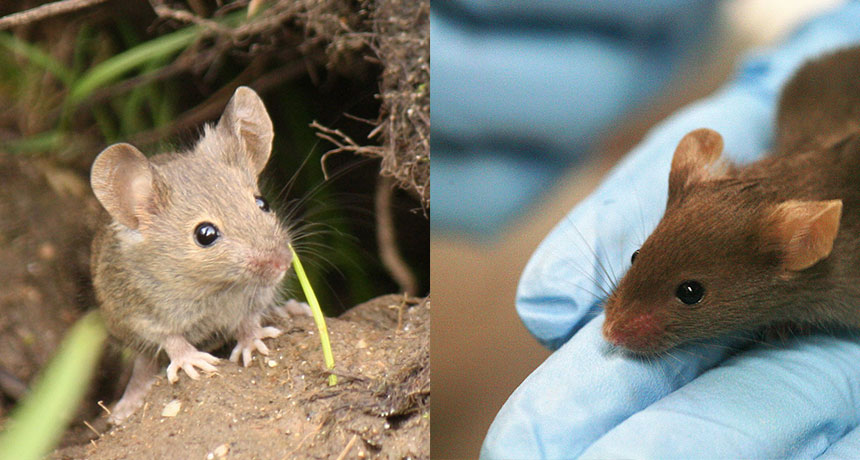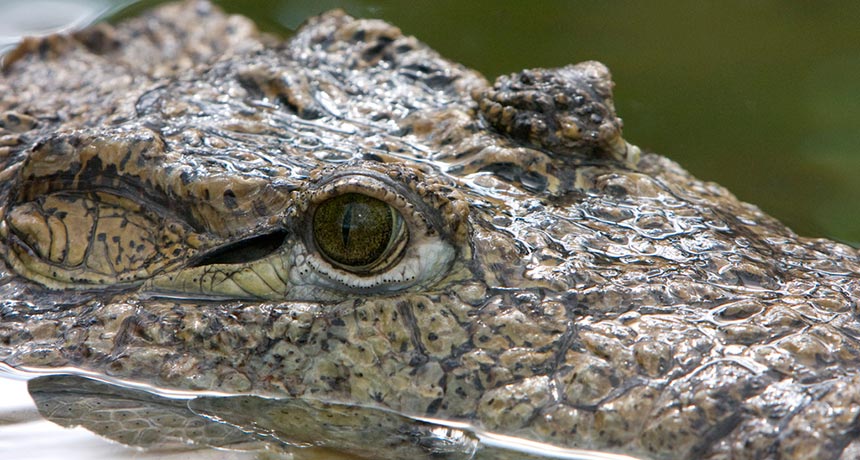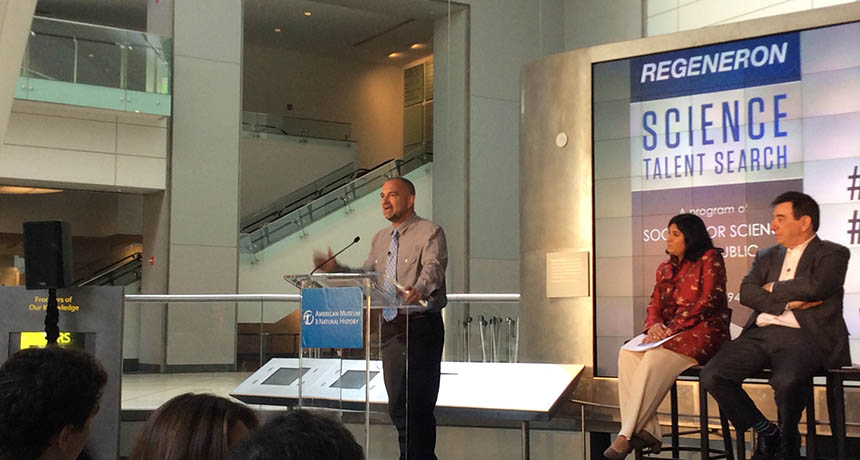‘Dirty’ mice better than lab-raised mice for studying human disease

Don’t blame lab mice for shortfalls in their ability to mimic human immune systems — blame their upbringing.
Mice with more experience fighting pathogens have immune system reactions more like humans’, conclude two studies published online April 20. “Dirty” mice bought from pet stores or caught in the wild have more humanlike immune systems than clean lab mice do, researchers report in Nature. And in Cell Host & Microbe, scientists find that infecting lab mice with a series of viruses and parasites alters their immune responses to be similar to those of dirty mice and humans.
In recent years, scientists have debated whether mice are adequate stand-ins for humans. Some say mice are poor substitutes, and that money should instead be spent on bolstering human studies (SN: 3/23/13, p. 10). Others look at the same data and conclude that mice do a pretty good job of representing humans (SN: 9/20/14, p. 14). Plus, many important studies could not be done with humans, so mice are a necessity.
But even mouse fans recognize there is room for improvement. “All science is an approximation of the real situation,” says immunologist Andrew Macpherson of the University Hospital of Bern, Switzerland, who relies on mice models. “I don’t think anybody doubts that the models don’t always accurately recapitulate what is happening in humans.” The new papers show where mice fall short and suggest ways to improve their ability to mimic people, he says.
Lab mice’s immune system responses “really do look different” from that of humans’, says immunologist David Masopust, coauthor of both studies. Masopust, of the University of Minnesota in Minneapolis, and colleagues wondered whether those dissimilarities are due to irreconcilable differences in the genetic makeup of mice and humans or if the environment plays a role.
His group counted immune cells in blood from adult lab mice, adult humans and human umbilical cords. Of special interest were “memory CD8+ T cells,” which cull body cells that are infected with viruses or bacteria or that have become cancerous. Lab mice and human infants have few of these memory cells, while adult humans have a plethora. That indicates that lab mice have inexperienced immune systems, much like human babies.
The finding, “is one of those things that once you know it, it’s incredibly obvious,” says E. John Wherry, an immunologist at the University of Pennsylvania. “Mice are like humans raised in a bubble.”
Masopust agrees. “They live a preposterously hygienic existence.” Even mice with severe immune deficiencies can thrive in immaculately clean labs.
Ultraclean lab mice can’t emulate the sort of history most human immune systems experience, says Tiffany Reese, a viral immunologist at the University of Texas Southwestern Medical Center in Dallas. Adults carry an average of eight to 12 chronic viruses, such as Epstein-Barr virus (the cause of mononucleosis). Worm parasites infect about 2 billion people worldwide. And by adulthood, people have usually fought off multiple colds, flus and other infections.
Masopust’s team found that the memory T cell profiles of wild and pet-store mice more closely resembled that of adult humans than lab mice’s did. Housing lab mice next to pet-store mice for a month caused their immune system to change, making the lab mice resemble the dirty mice, the researchers reported in Nature. In discrepancies between studies of lab mice and humans, “the mouse may not be at fault,” Masopust says. “It’s the way that they are cared for.”
An experienced immune system not only looks different, it also works differently from an inexperienced one, Reese and colleagues report in Cell Host & Microbe. Reese infected lab mice with two types of herpesviruses, gave them the flu and inoculated them with an intestinal parasite. She then compared how uninfected mice reacted to a yellow fever vaccine with how chronically infected mice reacted. Uninfected mice made more antibodies against the vaccine. The result might help explain why some vaccines that look promising in animal studies don’t pan out in human trials.
Controlled infections may increase understanding of how pathogens interact with each other, with friendly microbes that live in the body and with the host’s immune system, says Reese’s coauthor Herbert Virgin, a viral immunologist at Washington University School of Medicine in St. Louis.
Researchers have a bias that mice are not humans, says Virgin, “But I think that’s too simplistic a view. We shouldn’t be asking whether the mouse is a perfect model for humans, but whether we can make the mouse emulate more closely the basic nature of human physiology.”








